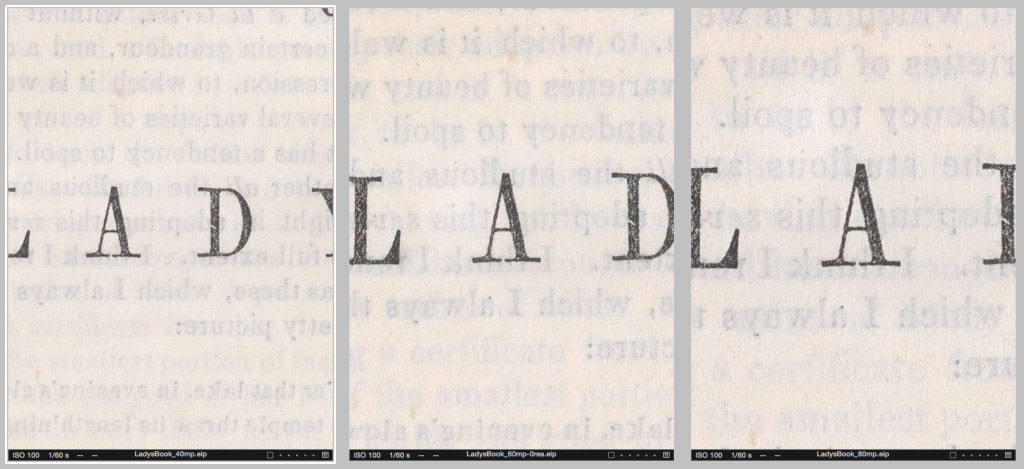Cultural Heritage, Digital Transitions, Tech Tips
How Much Resolution Do I need?
A Simple Question with a Complicated Answer
At Digital Transitions Division of Cultural Heritage, we provide more than just equipment of the highest quality. We work to provide our clients accurate knowledge and understanding of how to use the equipment to get the best results for any given collection and imaging program. As part of that mission we are often asked “How much resolution do I need?”.
Unfortunately this is a tricky question, because “resolution” just means the number of pixels saved in the file. Imagine two student essays, each 6,000 words long. One is written with great density of information and concise logical arguments, while the other is full of fluff and filler and has long drawn out and unclear arguments. Both essays have the same high “resolution of words,” but they are clearly not of equal quality.
How many words does an essay need? The purpose of an essay, the audience of the essay, and the complexity and nuance of the topic help determine how many words are required. But the quality of an essay cannot be measured purely by the number of words it contains; low quality writing makes for a low quality essay regardless of how many words it contains.
In this article we’ll compare the results of three different Phase One IQ digital backs which have a resolution of 40, 60 and 80 megapixels. We will also go over why high quality lenses and high quality raw processing is essential to live up to the level of detail that these resolutions give.
What More (Good) Resolution Provides
Note that in all examples the order is 40mp [left]
, 60mp [center]
, and 80mp [right]
. If you’re viewing this on a sufficiently high enough resolution screen the text under each image also contains the resolution. These images are all from the Lady’s Book Vol XXVII published in 1843.

From the first comparison image, we can clearly see that the resolution of these sensors have a very positive correlation to the amount of detail perceived. When we closely examine the page at 100% zoom, the 80MP digital back accurately captures the texture of the page, the 60MP digital back is doing a decent job, and barely any paper texture is shown with the 40MP digital back. Also, when looking at the lettering on the three different resolutions; the 80MP more clearly captures the imperfections of the type than the 60MP or 40MP.
Depending on the purpose of the captured image these details may be of no consequence; for instance if this captured image will only be used for OCR of the content then the page texture is not important. However, in an archival setting there is a strong benefit to having high enough quality to accommodate unforeseen uses, such as a researcher who wants to determine or authenticate authorship of a document based on the paper type or typeface used.
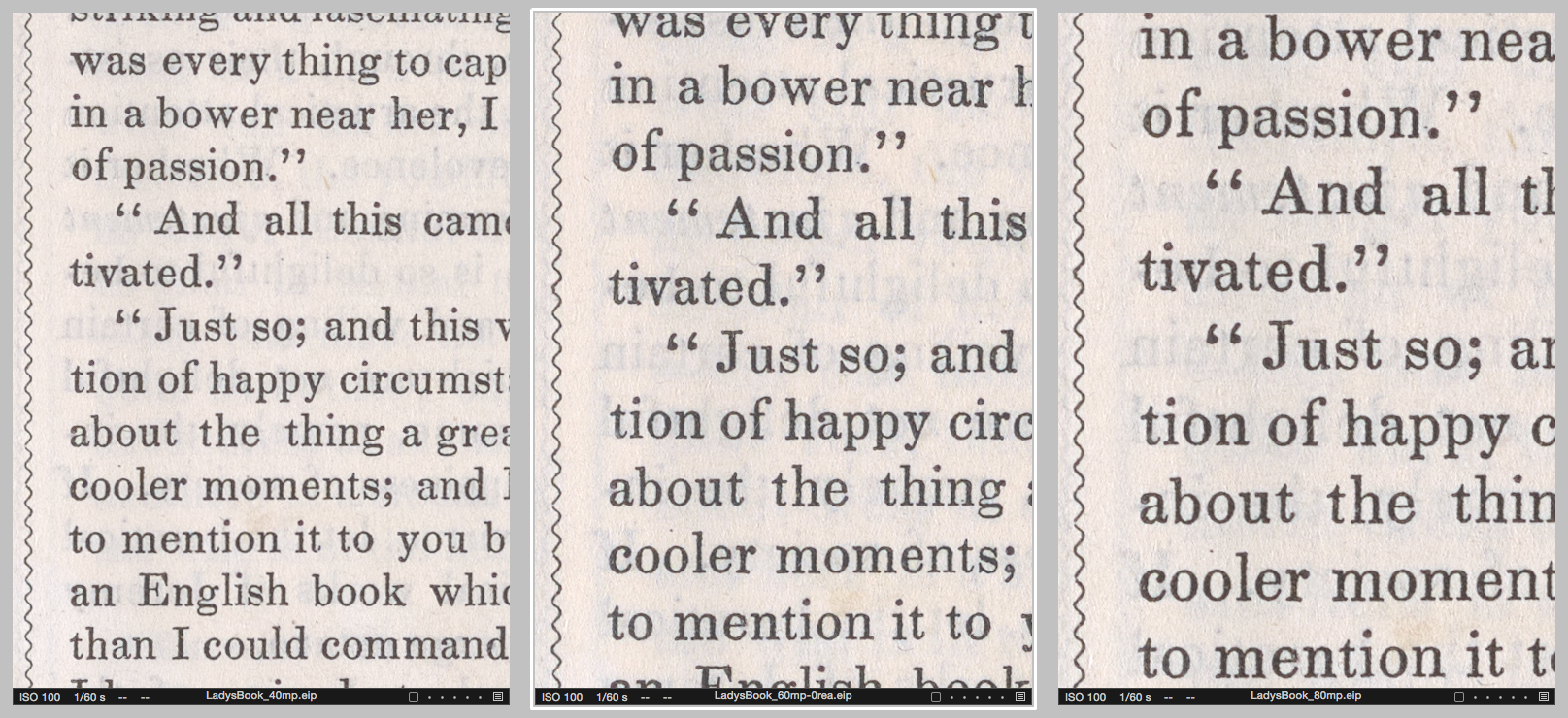
With that being said, depending on the sizes of your objects, sometimes higher megapixel digital backs are not necessarily needed, even for very high quality capture. If we look at a 40MP digital back shooting at 300, 400, and 600 PPI (Pixels Per Inch) with the sampling efficiency of 93%, we are able to capture objects at sizes of 19” by 26”, 14” by 19”, and 9” by 13” respectively. Therefore, if you know that all your objects are smaller than 9” by 13”, then you are able to use a 40MP digital back to still achieve high PPI; however, if you have anything larger than that size, you will have to either lower the PPI in order to fit the whole object or stitch two images into one in order to achieve the same PPI.
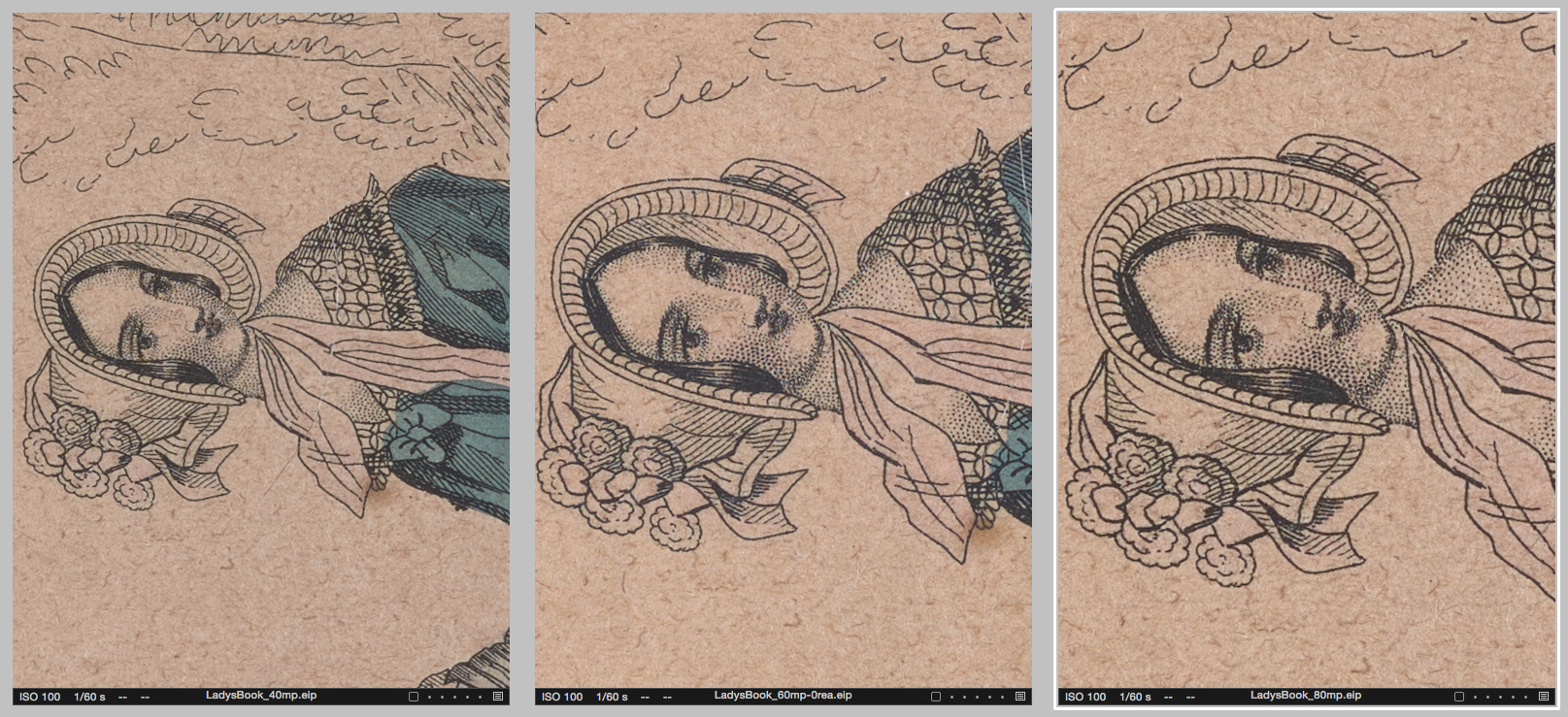
This is why, budget allowing, we suggest the highest megapixel digital backs on the market because of the flexibility and efficiency a higher megapixel can bring to the table. Using an 80MP digital back not only allows the capture of larger objects at high PPI (13” by 18” at 600 PPI with sample efficiency of 93%), it also allows the capture of two or more smaller objects simultaneously without sacrificing PPI. Using Capture One CH 8’s Multi Crop feature (http://dtdch.com/page/capture-one-ch) each object can be automatically extracted from the single capture.
Without a Good Lens More Resolution is Fruitless
Resolution isn’t everything. Having a high resolution sensor does not guarantee more detail will be captured. A high quality lens is required to resolve fine detail from an image and provide sharpness from corner to corner. Quality can be relative; a lens can be sharp until it is compared with something that is better, or until it is used at a higher resolution. It usually does not mean that lens is poorly made, just that lens may be made for a particular purpose, portraits for example.
The majority of photographers who use DSLR’s are not shooting flat objects with a strong emphasis on perfectly even sharpness to the corner of the frame. On the contrary, much of the time their aim is quite the opposite goal of shallow depth of field to create a scene that is dreamy and surreal. Therefore, for these manufacturers, their priority is to focus on make the glass so that the center of the frame is sharp, but not necessarily on the edges and corners. That is why we use Schneider APO-Digitar Electronic Shutter Lenses; its shutter blades are able to withstand more actuations than DSLR lenses with much better corner-to-corner flat-field sharpness than any DSLR lenses. For reprographic purposes; the Schneider digitar large format lenses provide the highest lens quality and provide the best longevity of equipment to boot.
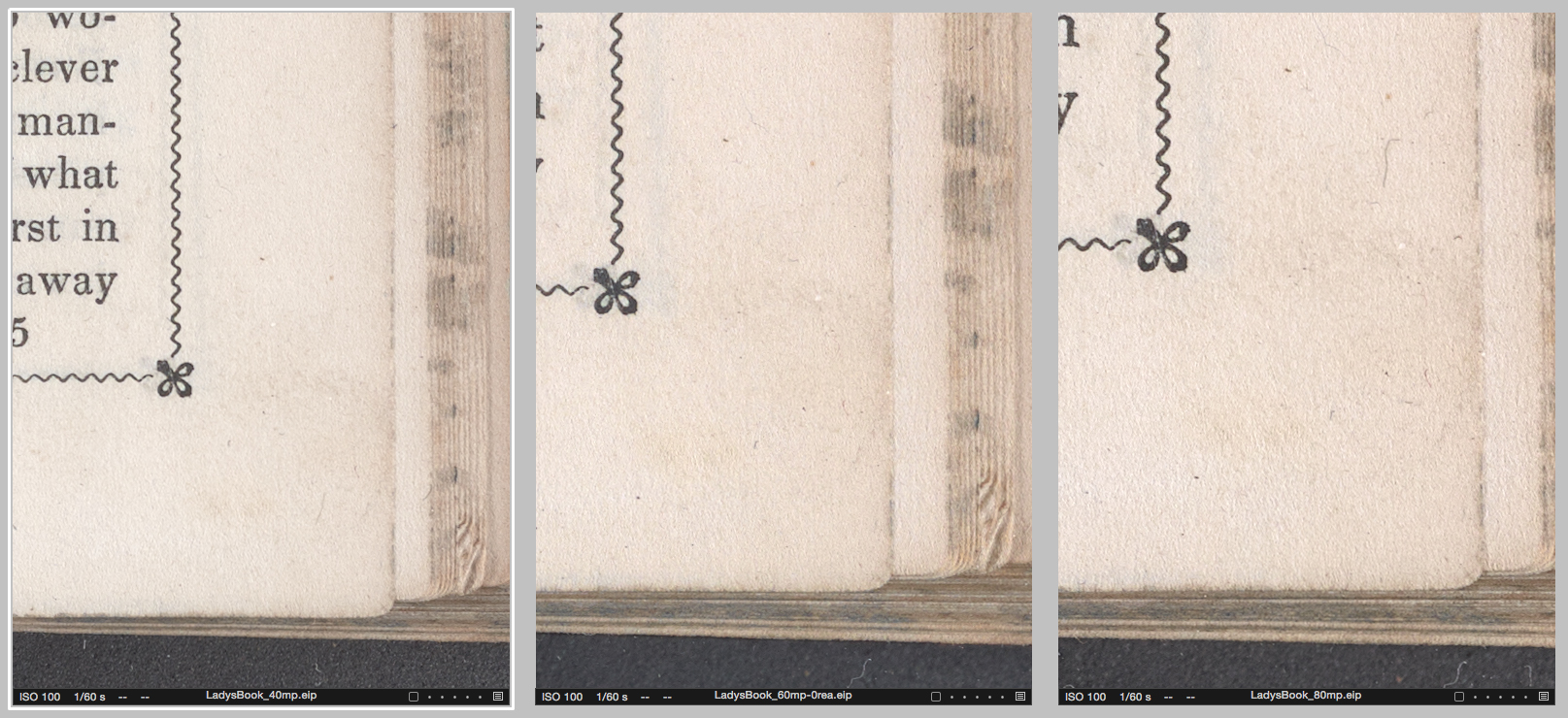
Raw Processing
We have talked about the impact of resolution and lens quality, and now, the final step is where the software extracts the information from the sensor’s raw output and uses algorithms to decode the information and convert that into image files. Most camera companies have their own raw converter or rely on Adobe’s RAW converter to process their raw files. Instead of relying on a software that is for general purpose use, Phase One has created a dedicated software, Capture One Cultural Heritage Edition. This is to ensure that with their advanced algorithms fully utilize each pixels of the digital back and convert that information into images with excellent details and a large dynamic range. These algorithms are the best on the market at providing accurate detail; test this for yourself by opening a carefully captured raw file, shot with a Schneider digitar lens, in both Capture One and Adobe Camera Raw. Don’t have such a file? Email info@dtdch.com and we’ll be glad to send you one to play with.
Back to the Question
Now it is clear why the simple question of “How much resolution do I need?” has a complicated answer. Some subject matter, audiences, and use cases call for more resolution, some call for less. But more resolution, without a top quality lens, and without excellent raw processing, will not provide better subject detail, or a finer rendition of texture.
Earlier, we introduced the idea of two essays with the same word count, but different densities/quality of actual useful information. In the same way that an English professor cares about more than word count, we must care about more than pixel count. Email us today at info@dtdch.com and we can help evaluate your collection, budget, and the needs of your digitization program’s proposed Preservation Digital Objects. Taking all of those factors into account we can help you determine how much resolution you need. We will draw on guidelines such as those from FADGI and METAMORFOZE and on our experience with digitization teams, curators, and researchers at our large client base. Beware anyone who instead simply wants to sell you a system because it provides X ppi.
CLICK HERE TO DOWNLOAD FULL RESOLUTION
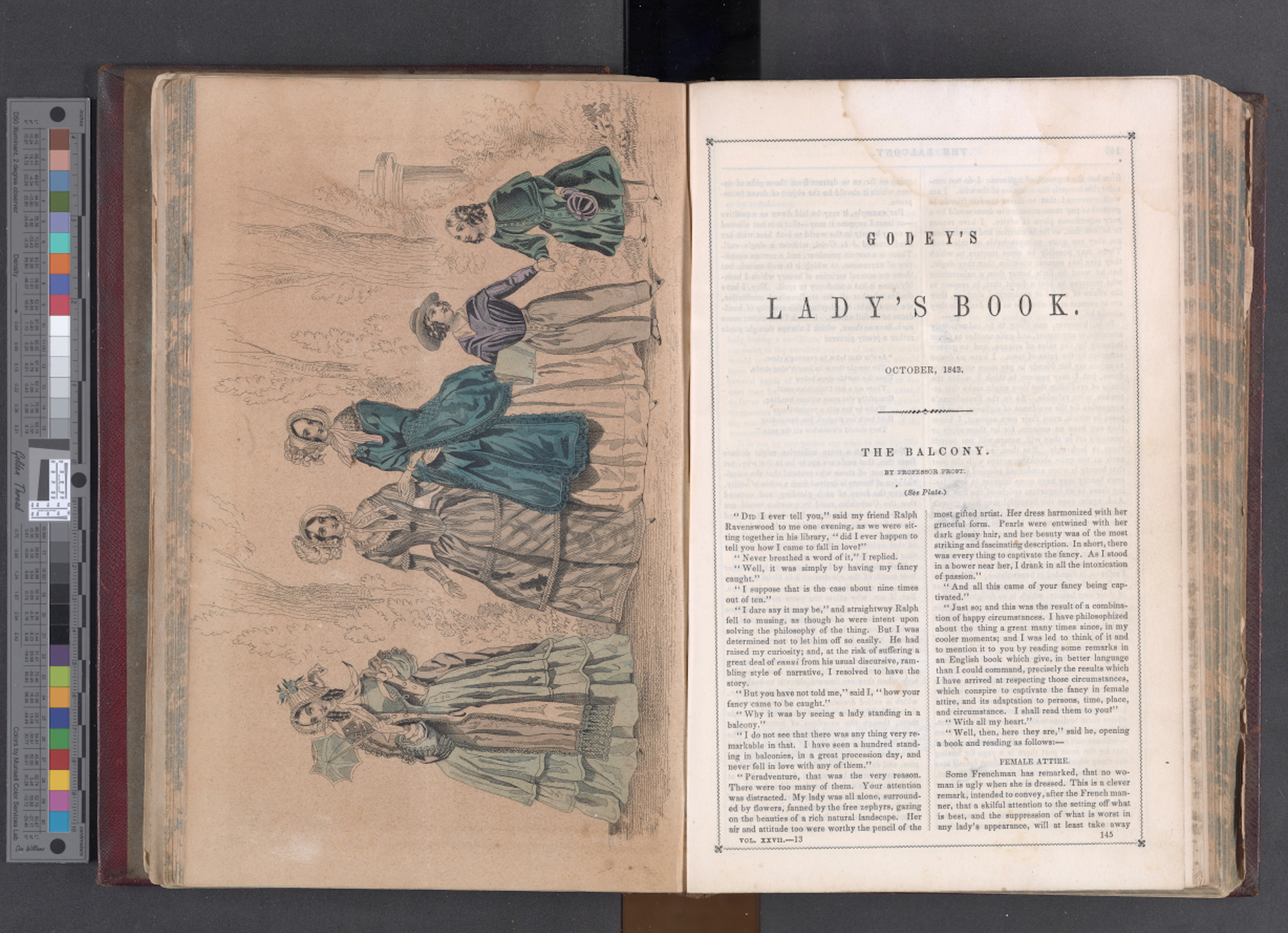
Joe King
DTDCH Technician
JKG@digitaltransitions.com
212-529-6825

